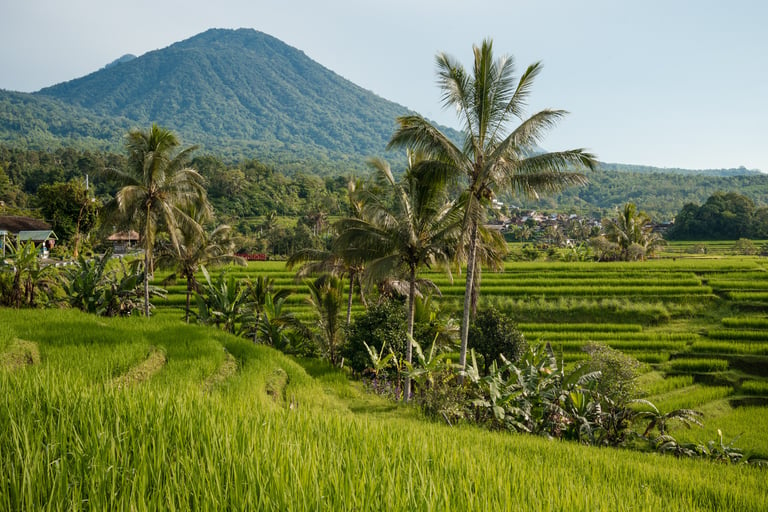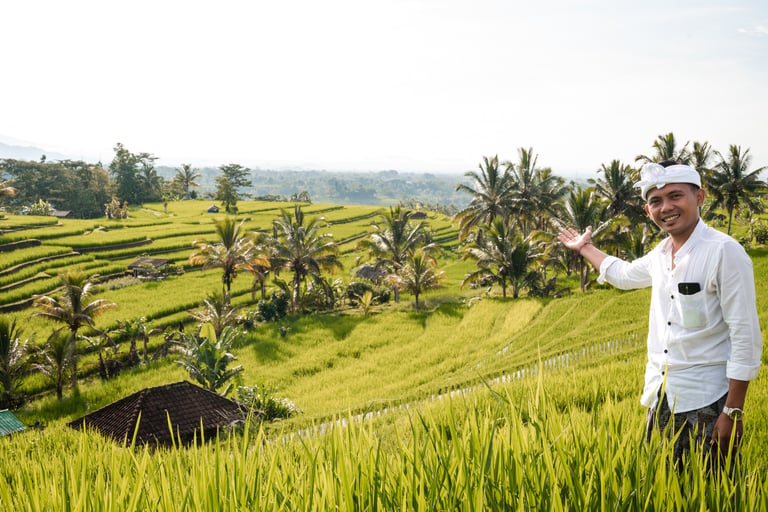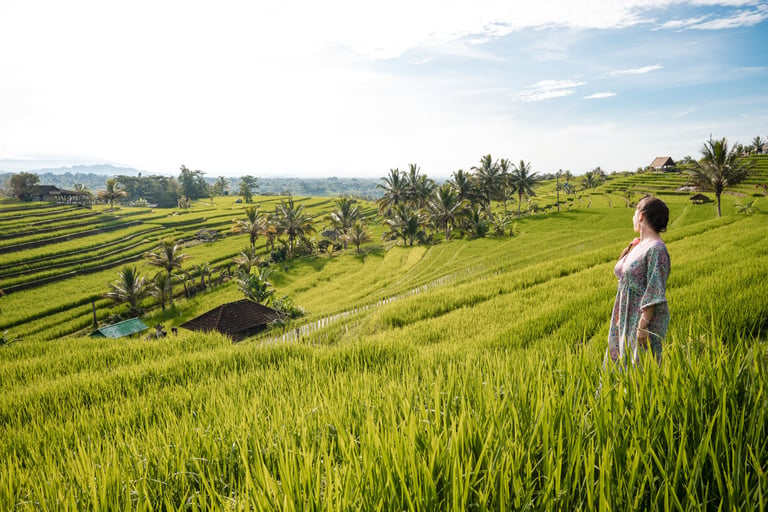Jatiluwih Rice Terrace
The Biggest Rice Terrace and Cultural Gem of Bali
3/23/20243 min read


If you're planning a trip to Bali, one place you definitely shouldn't miss is Jatiluwih. Located in the heart of the island, Jatiluwih is home to the biggest rice terrace in Bali. Not only will you be able to witness the stunning beauty of the rice terraces, but you'll also have the opportunity to learn about the unique irrigation system that runs through the region.
Exploring the Rice Terraces
As you make your way to Jatiluwih, you'll be greeted by a breathtaking sight. The rice terraces stretch as far as the eye can see, creating a mesmerizing view that will leave you in awe. The lush green fields are a testament to the hard work and dedication of the local farmers who have been tending to them for generations.Walking through the terraces, you'll have the chance to immerse yourself in the tranquility of the surroundings. The peaceful atmosphere, combined with the stunning natural beauty, makes Jatiluwih the perfect place to escape the hustle and bustle of everyday life.As you explore the rice terraces, take a moment to appreciate the intricate irrigation system that runs through the fields. Known as subak, this system has been in place for centuries and is essential for the successful cultivation of rice in Bali. The subak system relies on a network of canals and waterways that distribute water to the fields, ensuring that each terrace receives the necessary amount of water.


Learning About the Subak System
The subak system is not only a practical solution for irrigation, but it also holds great cultural and spiritual significance for the Balinese people. In fact, the subak system has been recognized by UNESCO as a World Heritage Site, highlighting its importance in preserving Bali's unique cultural heritage.During your visit to Jatiluwih, you'll have the opportunity to learn more about the subak system and its role in Balinese agriculture. Local guides will be more than happy to share their knowledge and insights with you, giving you a deeper understanding of the intricate workings of the irrigation system.As you walk along the canals and waterways, you'll see the farmers going about their daily tasks, tending to the fields and ensuring that the rice crops thrive. It's a humbling experience to witness the dedication and hard work that goes into the cultivation of rice in Bali.
Getting to Jatiluwih
Jatiluwih is located approximately 1.5 hours away from Ubud, making it a convenient day trip for those staying in the area. There are several ways to get to Jatiluwih, depending on your preferences and budget.If you prefer to travel independently, you can rent a scooter or a car and make your way to Jatiluwih at your own pace. The roads are well-maintained, and the journey itself offers stunning views of the Balinese countryside.Alternatively, you can join a guided tour that will take you to Jatiluwih and other nearby attractions. This option is great for those who prefer to sit back and relax while someone else takes care of the logistics.Whichever option you choose, make sure to allocate enough time to fully explore Jatiluwih and appreciate its beauty. The rice terraces are best enjoyed at a leisurely pace, allowing you to fully immerse yourself in the serenity of the surroundings.


Conclusion
Jatiluwih is more than just a rice terrace; it's a testament to the rich cultural heritage and agricultural traditions of Bali. Visiting Jatiluwih offers a unique opportunity to witness the beauty of the rice terraces and learn about the subak system that sustains them.Whether you're a nature lover, a photography enthusiast, or simply someone looking to experience the tranquility of the Balinese countryside, Jatiluwih is a must-visit destination. So, make sure to include it in your itinerary and prepare to be amazed by the sheer beauty of the biggest rice terrace in Bali.
